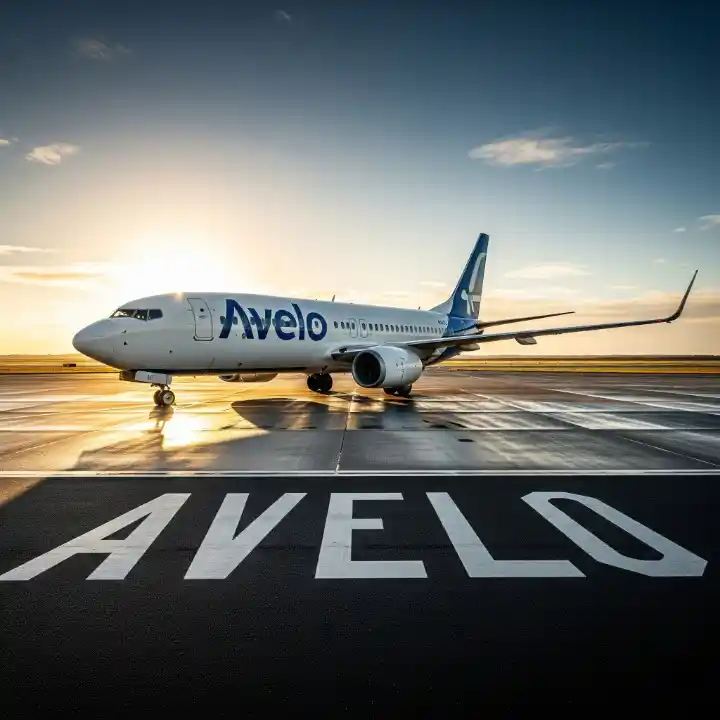Avelo is redefining “budget” not just as cheap, but as accessible, flexible, and community-connected. For business leaders and investors, Avelo’s rapid route growth and creative business model reveal lessons in both agility and ambition.
Why Avelo Stands Out in the Crowded Airline Sector
Avelo’s approach springs from classic low-cost carrier DNA, but its execution is freshly tuned for today’s travel environment:
-
Targeting Untapped Markets: While legacy carriers duel over mega-hubs, Avelo has quietly moved into overlooked airports—places like Wilmington International and Concord-Padgett connecting communities with direct, non-stop flights.
-
Flexible Scheduling: With three new $57 flights launched out of Concord, Avelo isn’t just winging it; they’re mapping service to real, measurable demand.
-
First International Leap: Announcing its inaugural international route from Wilmington, Avelo is stepping into global travel, leveraging established regional confidence to grow bigger.
For finance and business pros, Avelo’s success signals the continued importance of affordable, practical travel as an engine for broader economic activity.
Breaking Down the Avelo Model
Let’s translate Avelo’s strategy into simple building blocks:
1. Niche Routes, Not Just Big Hubs
Traditional airlines pour resources into a few central cities, betting passengers will connect there. Avelo bets on underserved, secondary airport cutting out costly congestion and putting flights close to where demand really lives. Operational savings pass straight to travelers.
2. Pricing for Accessibility
With fares often at $57 or below for new launches, Avelo appeals to cost-conscious flyers; students, microbusinesses, families. But the secret is dynamic pricing flexibility: on many dates, tickets remain low, stimulating spontaneous trips and new customer segments.
3. Community Engagement and Responsiveness
Avelo works with local chambers and economic development offices, customizing schedules for events or local needs. This focus on stakeholder relationships earns loyalty and buzz at ground level, translating into high load factors and repeat customers.
4. Lean, Simple Operations
Avelo’s fleet, processes, and staffing are streamlined single aircraft families, smaller crews, and minimal turn times. That means fewer headaches and predictable unit costs, even as the airline adds new destinations.
Practical Steps for Businesses and Investors Considering Avelo Engagement
If you’re thinking about leveraging Avelo’s growth, here’s a playbook to maximize the opportunity:
-
Track new route announcements: Expansion into new cities means local businesses can revisit travel policies, event plans, or logistics strategies.
-
Negotiate partnerships: Hotels, car rentals, and tour operators should look to bundle services or offer incentives for Avelo travelers.
-
Monitor load factors and fare trends: Avelo’s health often shows in its ability to fill seats at attractive prices key for long-term partners or regional investors.
-
Explore group and corporate rates: Even as a low-cost operator, Avelo is eager to work with business travelers, sports teams, or conference organizers.
-
Stay alert to regulatory and infrastructure developments: Growth can be affected by airport investments, regulatory reviews, and regional support.
Challenges and Mistakes to Watch When Engaging with Low-Cost Airlines
-
Assuming all budget airlines are equal: Avelo’s community-first approach may offer more reliability or flexibility than ultra-low-cost rivals.
-
Overlooking regional volatility: Demand in secondary markets can swing with macroeconomic shifts or local dynamics more than major hubs.
-
Ignoring infrastructure needs: Partner businesses should plan for capacity—airport shuttles, baggage handling, and guest services all need to scale smartly.
-
Neglecting reputational risk: While low fares are appealing, travelers still expect punctuality, cleanliness, and transparency essentials for repeat business.
The Ripple Effects: How Avelo Shapes Local Economies and Travel Patterns
Avelo’s regional and international expansion isn’t just an airline story—it’s a local investment story:
-
Boosts to local business: More flights spur tourism, conventions, and workforce mobility, all of which flow cash into local communities.
-
Lowered travel friction: Direct flights from local airports reduce missed appointments, boost productivity, and encourage leisure travel.
-
Market discipline: Big airlines keep an eye on Avelo’s fares and efficient ops, sometimes triggering competitive improvements industry-wide.
Conclusion: What Avelo Teaches About Modern Airline Strategy
Avelo’s rise is a study in targeted growth, community engagement, and operational simplicity. For business and finance leaders, the company’s journey proves that agility, local relationships, and a clear value promise can rewrite sector playbooks even as industry titans struggle with legacy overhead.
Are you in a market where Avelo just landed? Have you used their service, or are you planning a partnership?
Drop your insights below or connect with a travel expert or financial advisor to see how agile regional airlines might fit into your business model.





